サンザシは江戸時代に薬用で渡来し、観賞用でも広がりました。春は白色の花々と若葉、秋は赤色の果実と紅葉。花言葉は「希望」などです。
Japanese Hawthorn came to Japan in the Edo period for its medicinal use and spread as an ornamental plant. White flowers and young leaves in spring, red fruits and red leaves in autumn. Flower language is “hope”.
【仮名】サンザシ
【和名】山査子
【英名】Japanese Hawthorn
【学名】Crataegus cuneata
【誕生】05/ 13
【開花】04, 05月
【花色】White, Pink
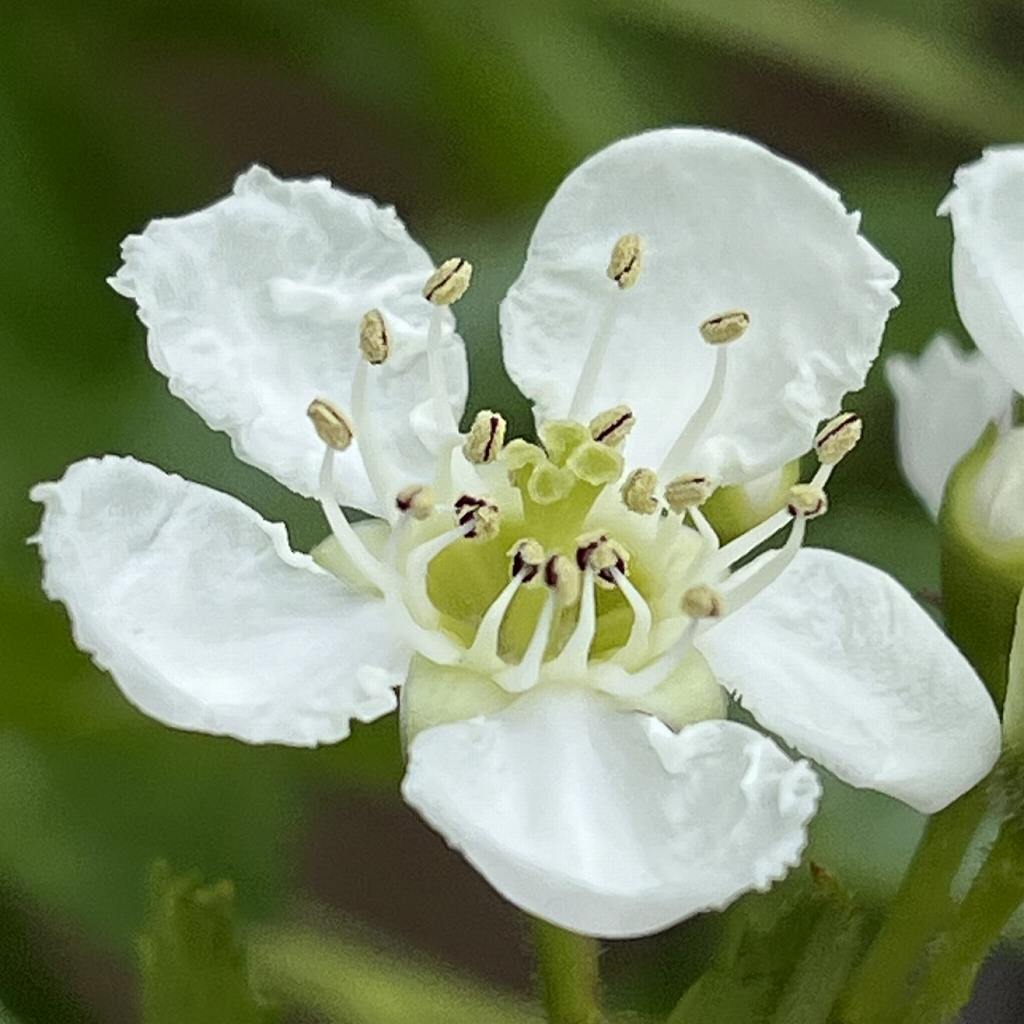
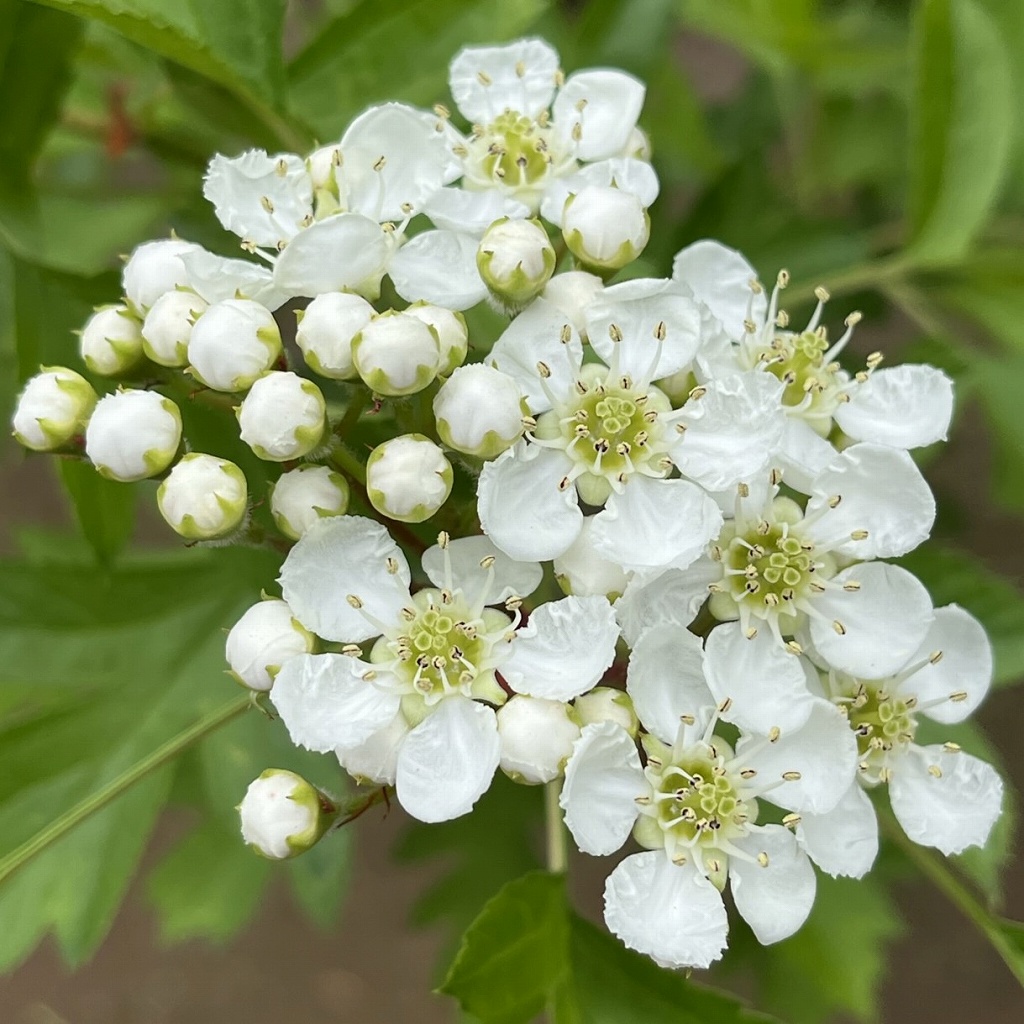
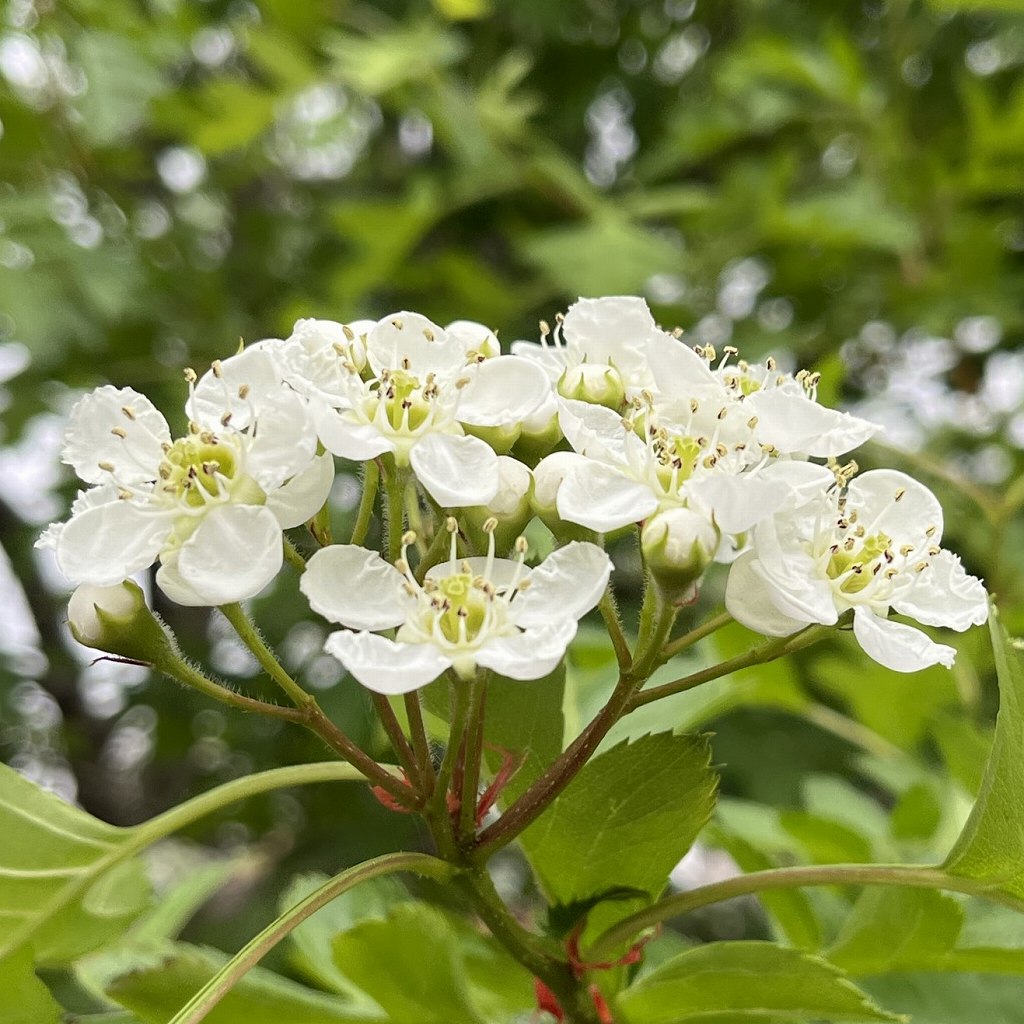
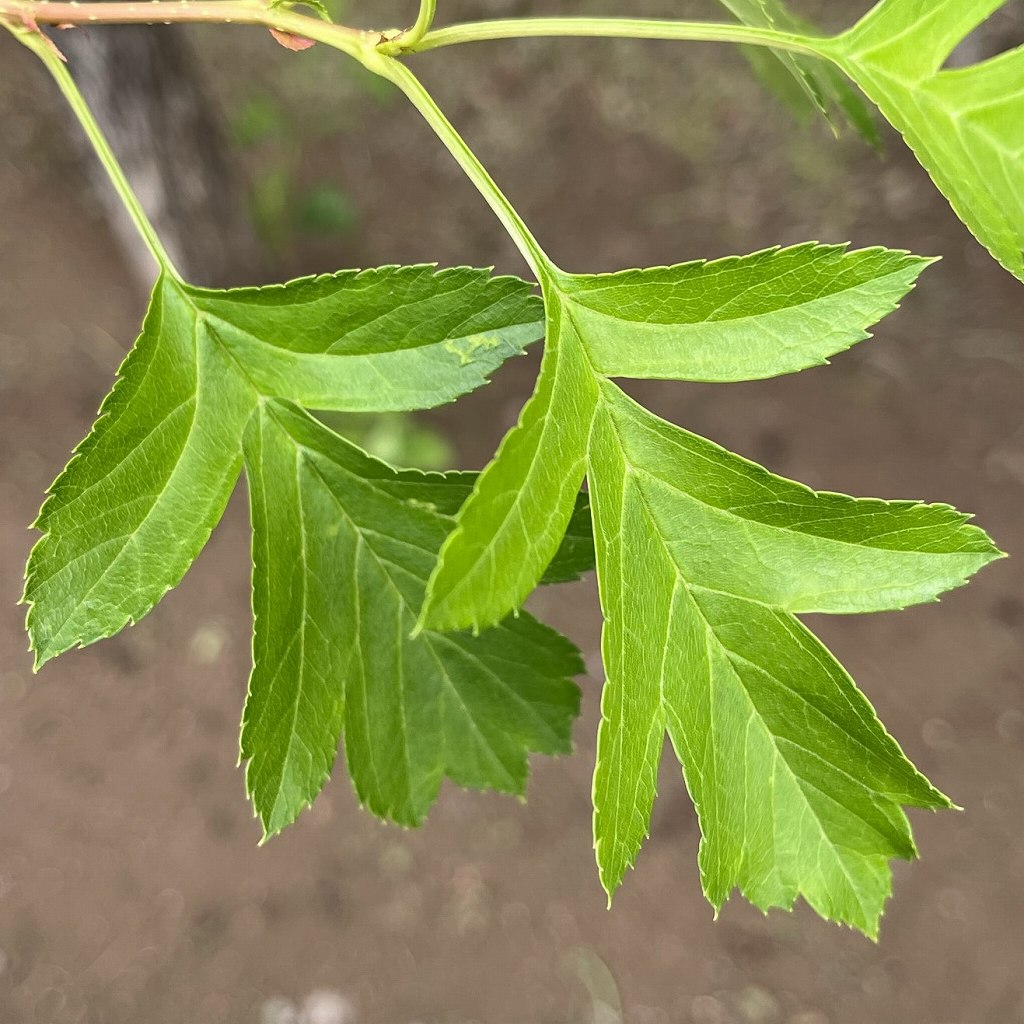
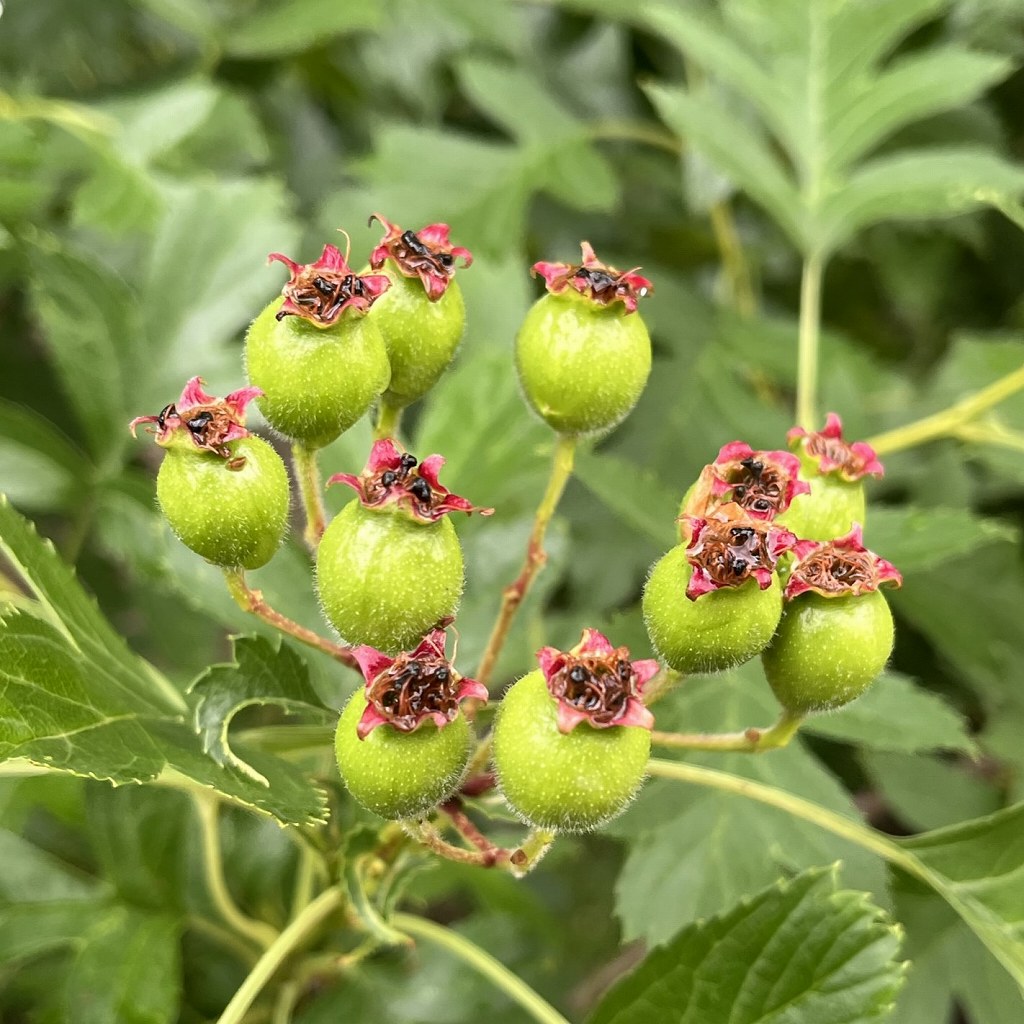
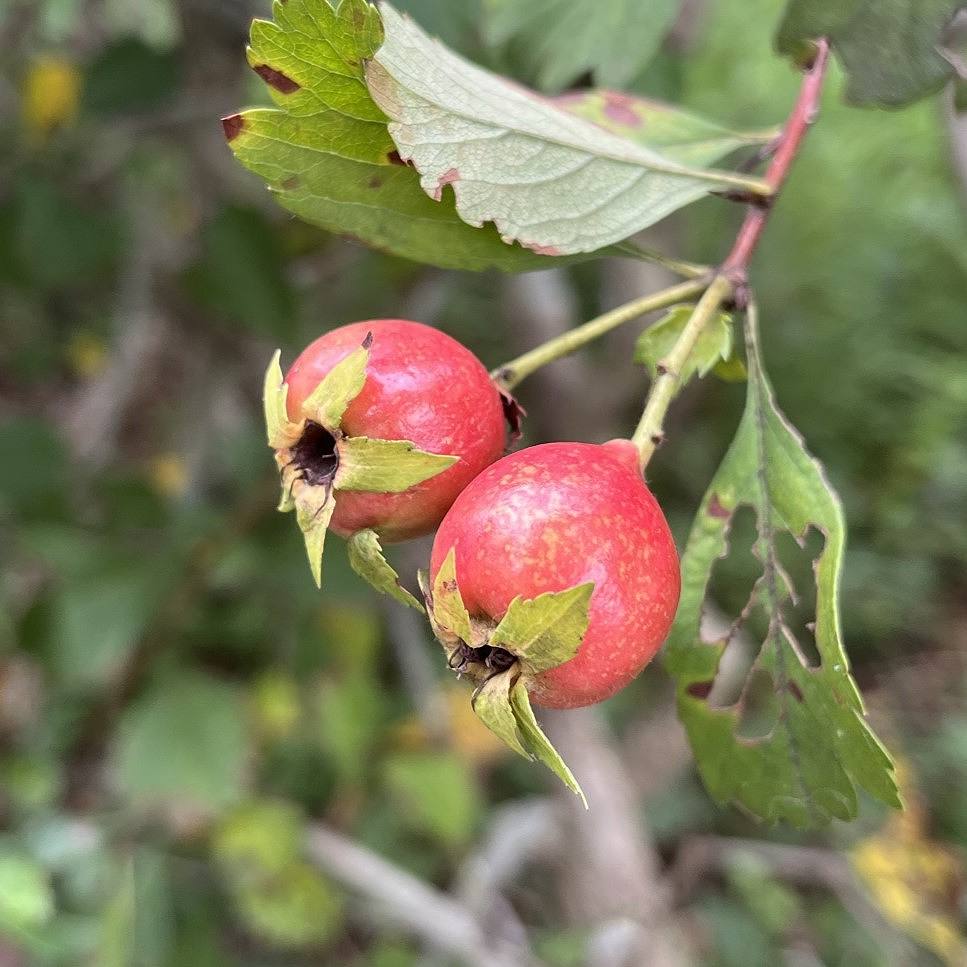
サンザシ
サンザシの概要
サンザシはバラ科の落葉低木です。原産地は中国中南部で、日本へは朝鮮半島を経由して、江戸時代の享保年間に渡来。小石川御薬園から各地に広がり、薬用で栽培される一方、観賞用でも親しまれました。春は白色の花々と若葉、秋は赤色の果実と紅葉。花言葉は「希望」などです。
サンザシの名前
サンザシの和名は漢名「山査子」の音読み。中国では山査が植物名、子が果実です。英名ホーソーンは「垣根に用いられる棘のある木」といった意味。ラテン語の属名クラタエガスは「力強い」という意味で材の硬さに、種小名クネアータは「楔形」という意味で鋭い棘に由来します。
サンザシの姿形
サンザシはよく分枝し、枝に鋭い棘がたくさん。葉は互生し、倒卵形で3~5つに裂け、先の方に鋸歯が入り、裏面に毛が生えます。花は白色で、枝先に集まって上向きに咲き、花弁が5枚、雄しべが20本、雌しべが5~6裂。花後は扁球形の偽果を結び、赤色または黄色に熟します。
サンザシの近縁
サンザシの近縁「大実山査子」は原産地が中国北部。枝に棘が少なく、果実が大きく、おもに東アジアで栽培されます。一方、「西洋山査子」は原産地が欧州で、葉裏に毛が生えず、果実が小さく、おもに欧米で栽培。そのほか、花が桃色、八重咲き、果実が黒色などの種もあります。
サンザシの利用
サンザシの果実は特異な臭気と強い酸味があり、生のままでは食べにくいため、砂糖で煮詰めてジャムにしたり、お酒に漬けるなど加工してから食用。一方、天日で干した果実は生薬「山査子」として健胃、整腸、止血に、民間療法では二日酔いや食あたりなど、幅広く用いられます。
Japanese Hawthorn
Japanese Hawthorn is a deciduous shrub of the Rosaceae family. Originating in central and southern China, it was brought to Japan via the Korean Peninsula during the Kyoho era of the Edo period. From Koishikawa Oyakuen, it spread to various places, and while it was cultivated for medicinal purposes, it was also popular for ornamental purposes. White flowers and young leaves in spring, red fruits and red leaves in autumn. Flower language is “hope”.
The Japanese name for Hawthorn is the pronunciation of the Chinese name ofHawthorn. The English name Hawthorn means “tree with thorns used for hedges”. The Latin genus name Crataegas means ‘strong’, referring to the hardness of the wood, and the specific epithet Cuneata means “wedge-shaped” and comes from the sharp spines.
Japanese Hawthorn are highly branched and have many sharp spines. The leaves are alternate, obovate and divided into 3 to 5 pieces, with serrated tips and hairy undersides. The flowers are white, clustered at the tips of branches, and bloom upward. They have 5 petals, 20 stamens, and 5-6 lobed pistils. After flowering, a flattened spherical pseudofruit is formed and ripens to red or yellow.
A close relative of Japanese Hawthorn, “Crataegus pinnatifida” is native to northern China. It has few thorns on its branches and large fruits, and is mainly cultivated in East Asia. On the other hand, “Crataegus monogyna” originated in Europe and is mainly cultivated in Europe and the United States because it has no hair on the underside of the leaves and has small fruits. In addition, there are species with pink flowers, double flowers, and black fruits.
Japanese Hawthorn fruit has a unique odor and a strong sour taste, so it is difficult to eat raw. On the other hand, the sun-dried fruit is widely used as a crude drug for stomachic, intestinal regulation, and hemostasis, and as a folk remedy for hangovers and food poisoning.


